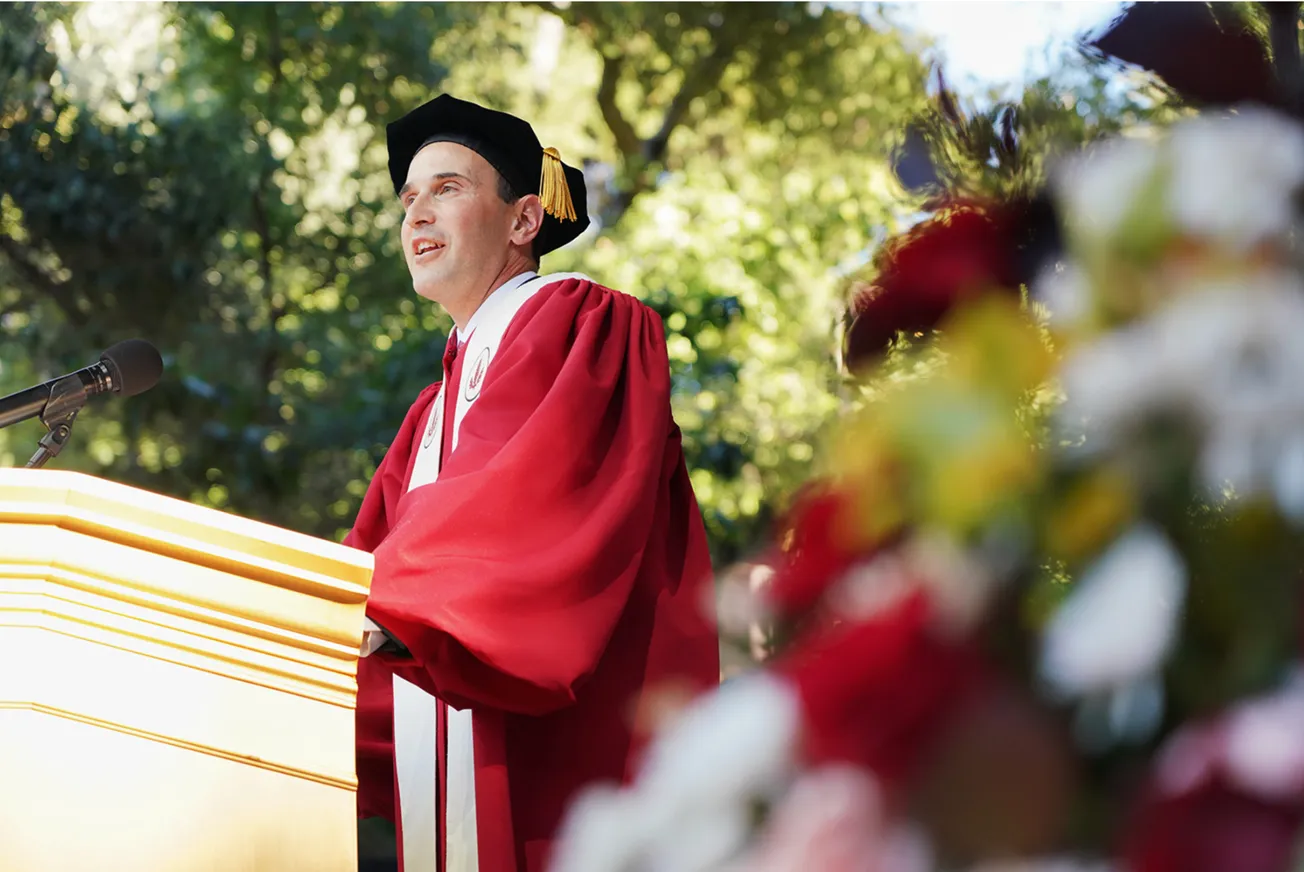Table of Contents
“Overwhelmed, unassimilated.”
That’s how Gabriel Benarros ’12 characterizes the Stanford graduate student population. He notes their relative isolation from the undergraduate community and their propensity to dramatize their busy schedules.
But these flaws are interpreted very differently by those in grad school. What causes the rift between two student groups studying at the same university?
Age is a deciding factor. Students pursuing Ph.D.s, especially in the humanities, tend to be about a decade older than their undergraduate brethren. And because old age fosters earlier bedtimes and a proclivity for more understated social gatherings, the largest graduate student housing communities, Rains and Escondido Village (EV), are conveniently ignored.
Graduate housing, enjoyed by only about half the grad student population, does not lend itself to the cohesion so common in freshman dorms and row houses. Graduate student housing errs toward a solitary and isolated existence.
“People looked at me like I was crazy when I said ‘hi’ in the hallways.” says Cristiana Giannini ’11, an undergraduate who lived in EV for a quarter after studying abroad. There is certainly no avoiding the simple truth that graduate student housing life is less lively and close-knit than undergrad housing.
“Maybe I’m just too pampered by my undergrad years,” Giannini said. “Graduate housing is pure depressing.”
Graduate students stand apart from undergrads in at least one fundamental way: they have already excelled within their chosen field. While freshmen must spend a quarter adjusting to not being the smartest person in school, graduate students have proven their academic worth at one or two other universities. The graduate student’s path is narrow and more focused than that of undergrads.
Graduate students often lack the bond of common age, forced unity, and the obliviousness so dear to those freshmen who have just left home. However, there is still an attempt to create a community. Graduate students enjoy quarterly dances, parties in the courtyards of Rains, and outings planned by Community Associates (CAs).
Michael Marx, a second-year electrical engineering Ph.D. student and CA for EV-South says, “Neighborhood events can be anything that will get people out of their apartments and help residents meet new people.”
When asked about Stanford’s graduate social scene, Marx responded, “One of the strengths of our graduate community is the large number of very social people. Stanford is a demanding academic environment, so it can be hard to pull yourself away from your studies and go out.”
There are several points of convergence between graduate and undergraduate life. Jack Jorgensen ’12 explained that he interacts with graduate students through club sports. There is also a significant graduate contingent in the Music Department, as well as in more academically-driven organizations affiliated with research interests. In these groups, the ‘unfamiliar’ grad students mingle with the ‘carefree’ undergrads. Common interests briefly erase what formerly divided the two groups.
All students—graduate and undergraduate—benefit from Stanford’s name and reputation. The Stanford connection is not taken lightly by any student, and is indeed one of the most valuable resources on campus. Graduate students put less emphasis on building a community and more on “networking,” thereby blurring the line between social and professional interactions.
In 1891, out of the fifty-one graduate students enrolled at Stanford, twelve were women. Today there are 8,779 matriculated grad students in 65 departments regarded highly in the academic and private sectors. The years spent attending talks, publishing papers, and skipping lunch to work in the lab can be as fulfilling academically as they are socially.
Anna Wittstruck, a second-year Ph.D. student in musicology, says that intermingling academic and social endeavors epitomizes her Stanford experience.
“I would like to think that playing in orchestra, performing in chamber music, et cetera, are all things that give me a unique perspective in studying and teaching music,” she said. “But it’s undeniable that these activities play most critically into cultivating meaningful social interactions with other musicians and students, and enrich my quality of life as a graduate student.”
Unassimilated and overwhelmed as they may be, graduate students find their own place on the margins of campus—in labs, music ensembles, team sports, and elsewhere. They assimilate through social dance and football games, even if at times they are only recognizable by their bike helmets.



